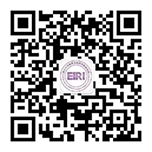prof. ningyu liu (刘宁宇)
department of physics & space science center
university of new hampshire, durham, new hampshire, usa
报告题目:recent streamer studies to understand the initiation
of lightning and sprites
时 间:5月15日(周三)9:00
地 点:清华大学西主楼(电机系)3区102
邀请人:庄池杰 副教授
abstract:
streamers are filamentary plasmas that are commonly found in transient electrical discharges. research work on streamers is important for safe operation of high-voltage equipment and transmission lines in power systems. streamers are also key components of electrical discharges in the earth’s atmosphere, such as lightning, jets and sprites. despite hundreds of years of research, how lightning starts inside thunderclouds is poorly understood. the problem is that the measured thunderstorm electric field is well below the threshold value for electrical breakdown of air. about thirty years, high-altitude discharges called sprites and jets were discovered, and we now know that streamers are the building blocks of those discharges. this talk will begin with an overview of high-altitude discharges and then discuss recent streamer studies to understand the initiation of lightning and sprites.
about the speaker:
dr. liu is an associate professor at the university of new hampshire. he holds a joint faculty appointment in the department of physics and space science center. he obtained his b.s. and m.s. degrees from zhejiang university, and ph.d. degree from the pennsylvania state university, all in electrical engineering. prior to joining the university of new hampshire in fall 2016, he was a faculty member at florida institute of technology. he received young scientist award from international union of radio science in 2008, and faculty excellence award in research from florida institute of technology in 2016. he is a recipient of us nsf career award.
his research interests are in the areas of plasma discharge physics, radio science, remote sensing, optical imaging, and computational electrodynamics. he has published about fifty papers in top research journals, including nature communications and physical review letters.






 九游会官方网站登录的公告
九游会官方网站登录的公告